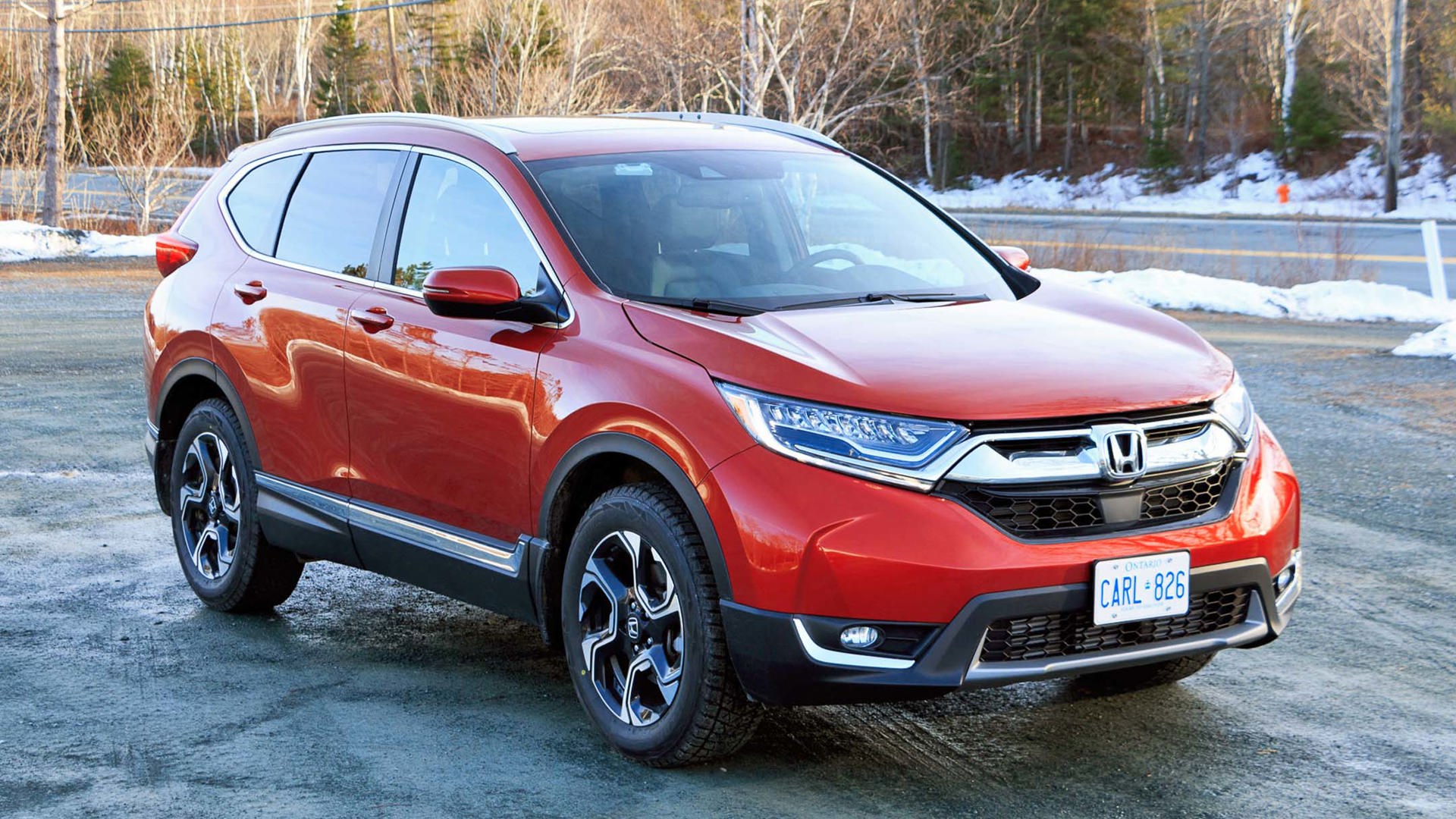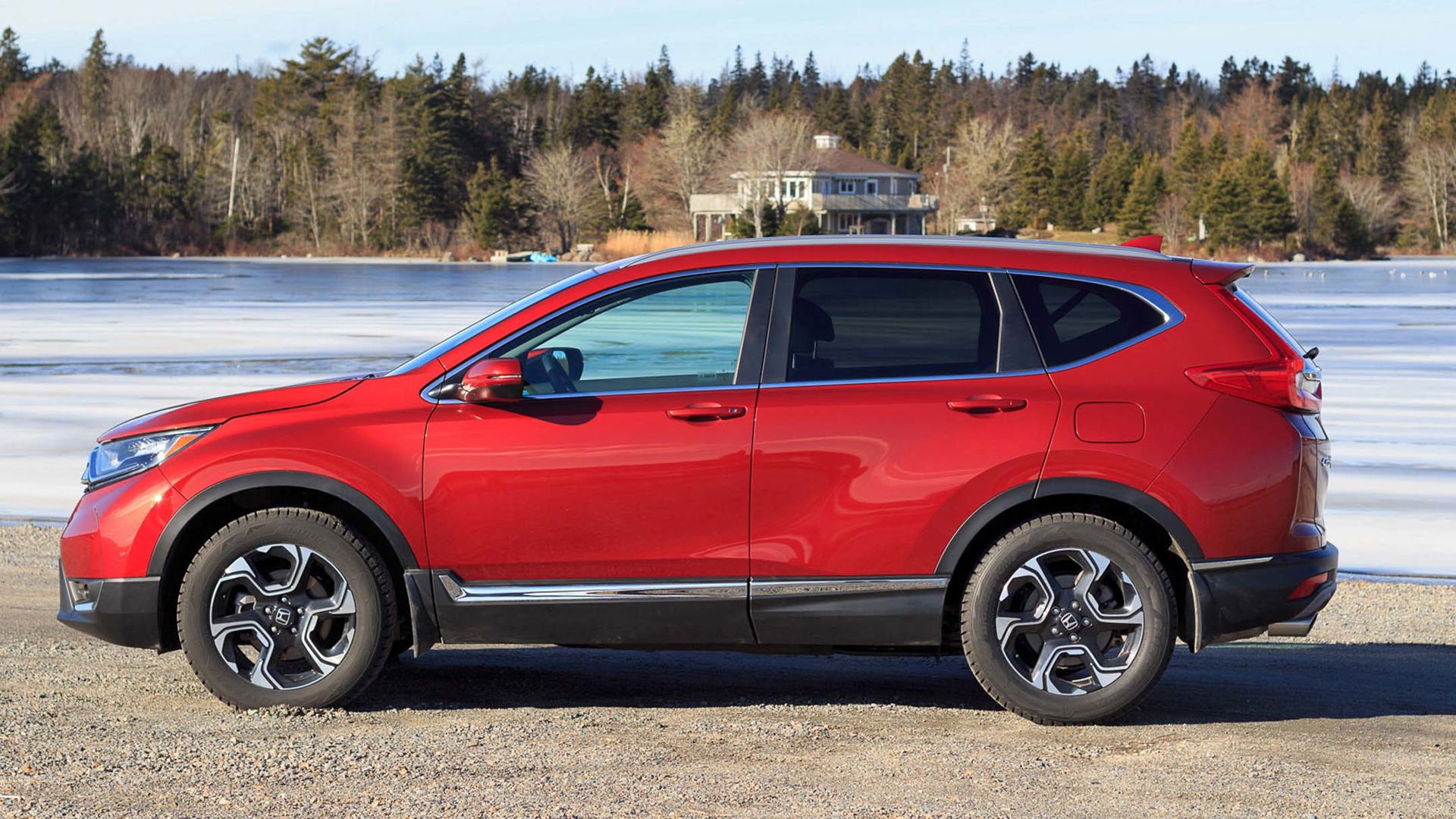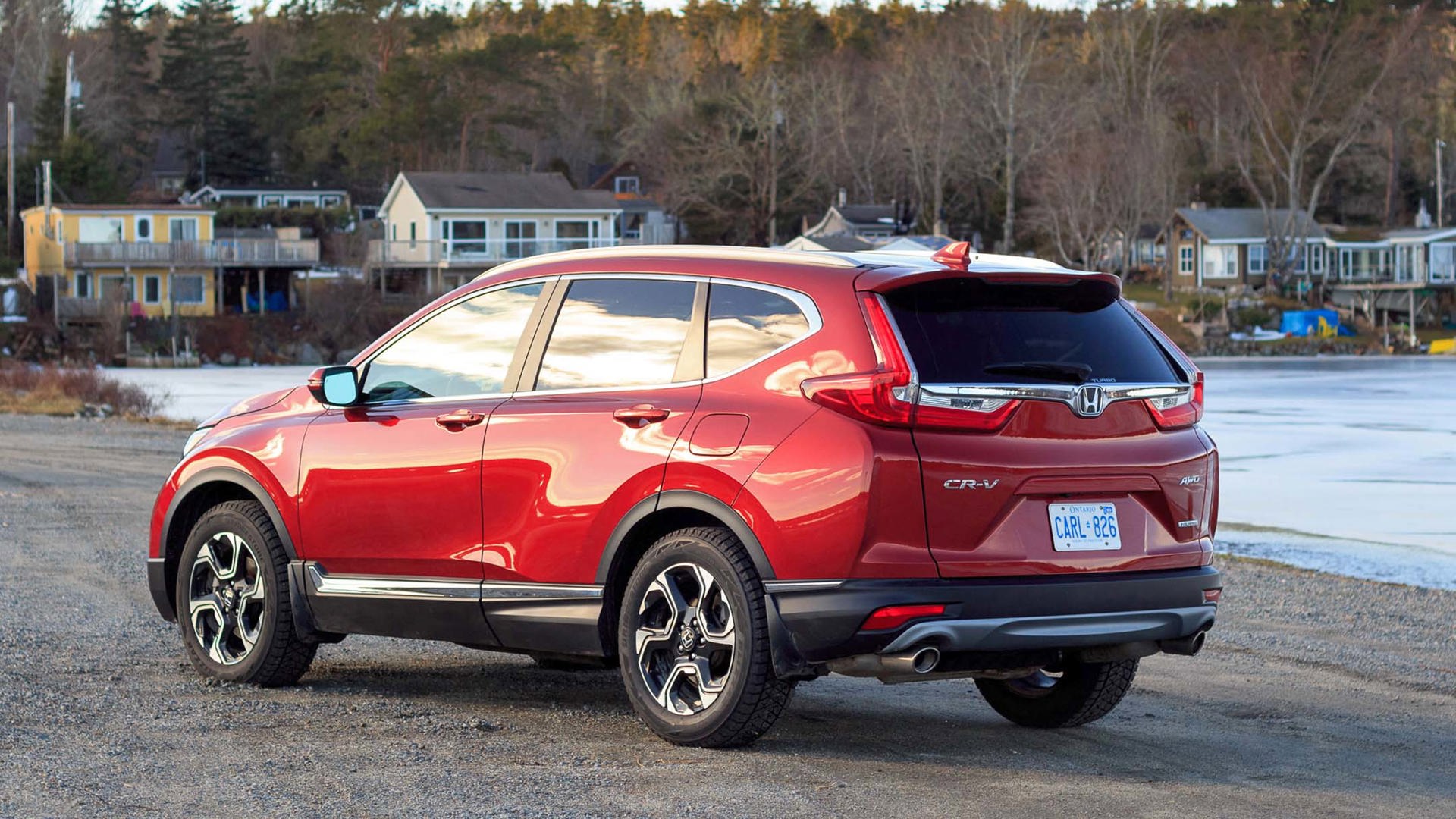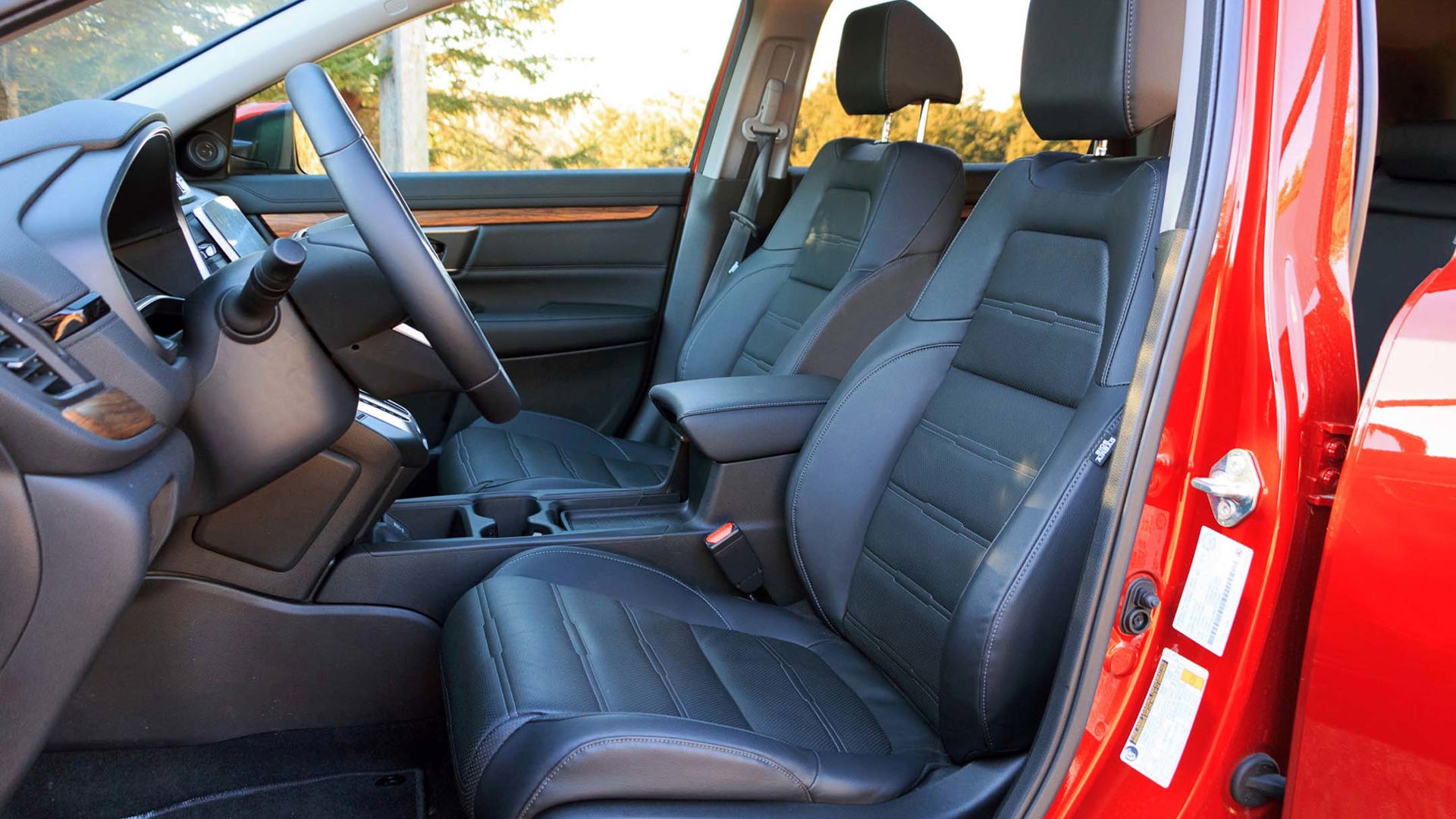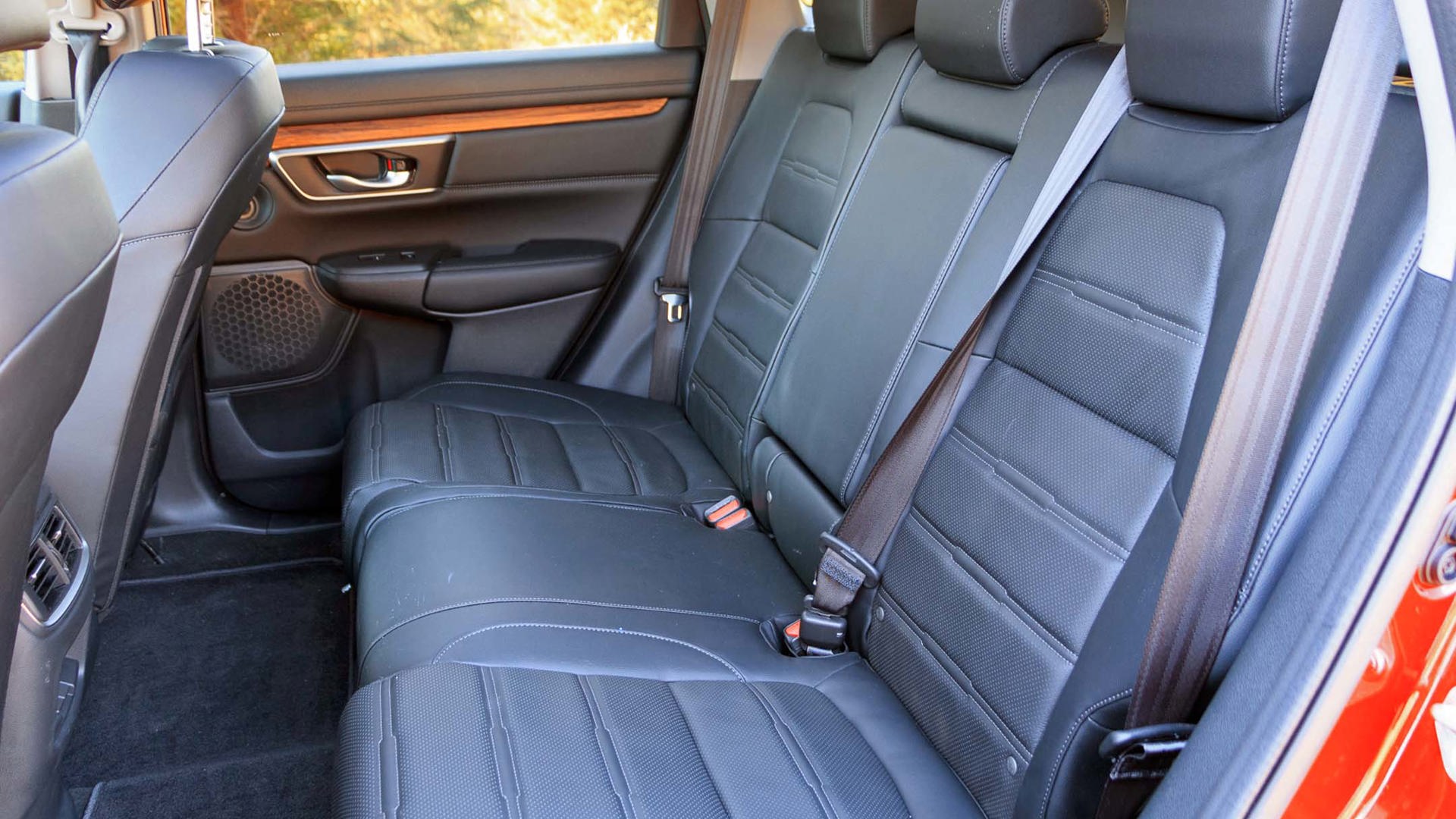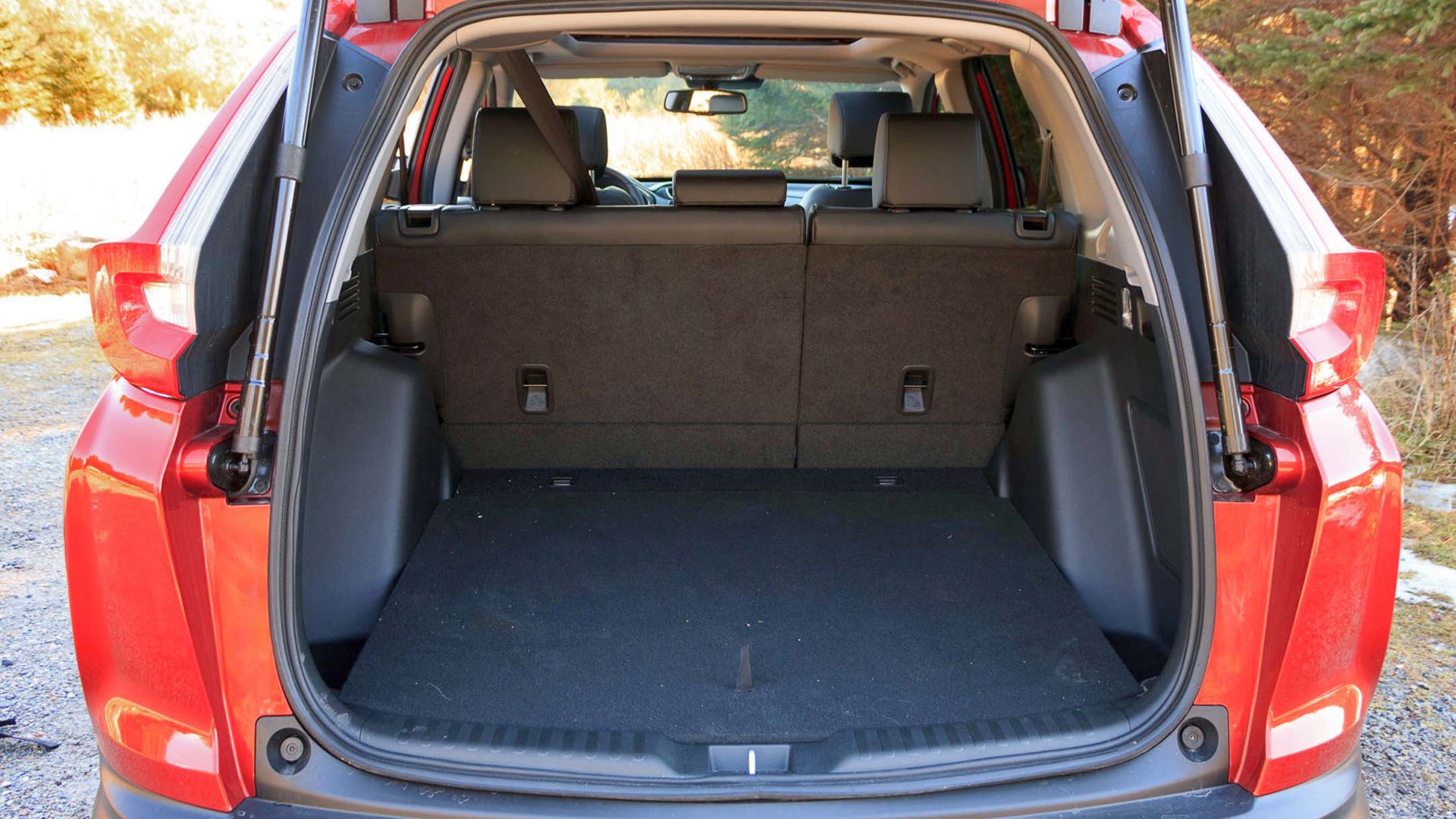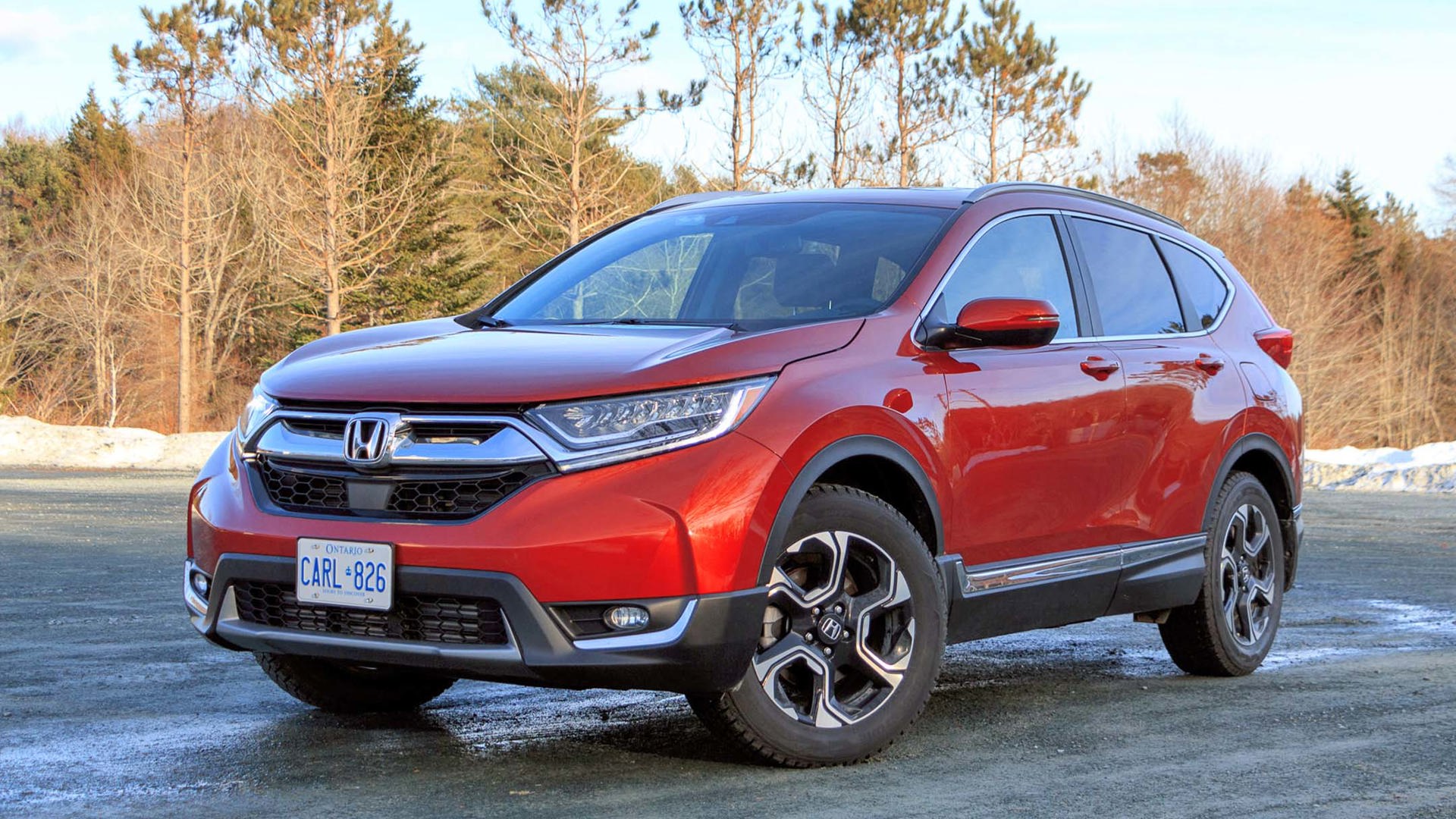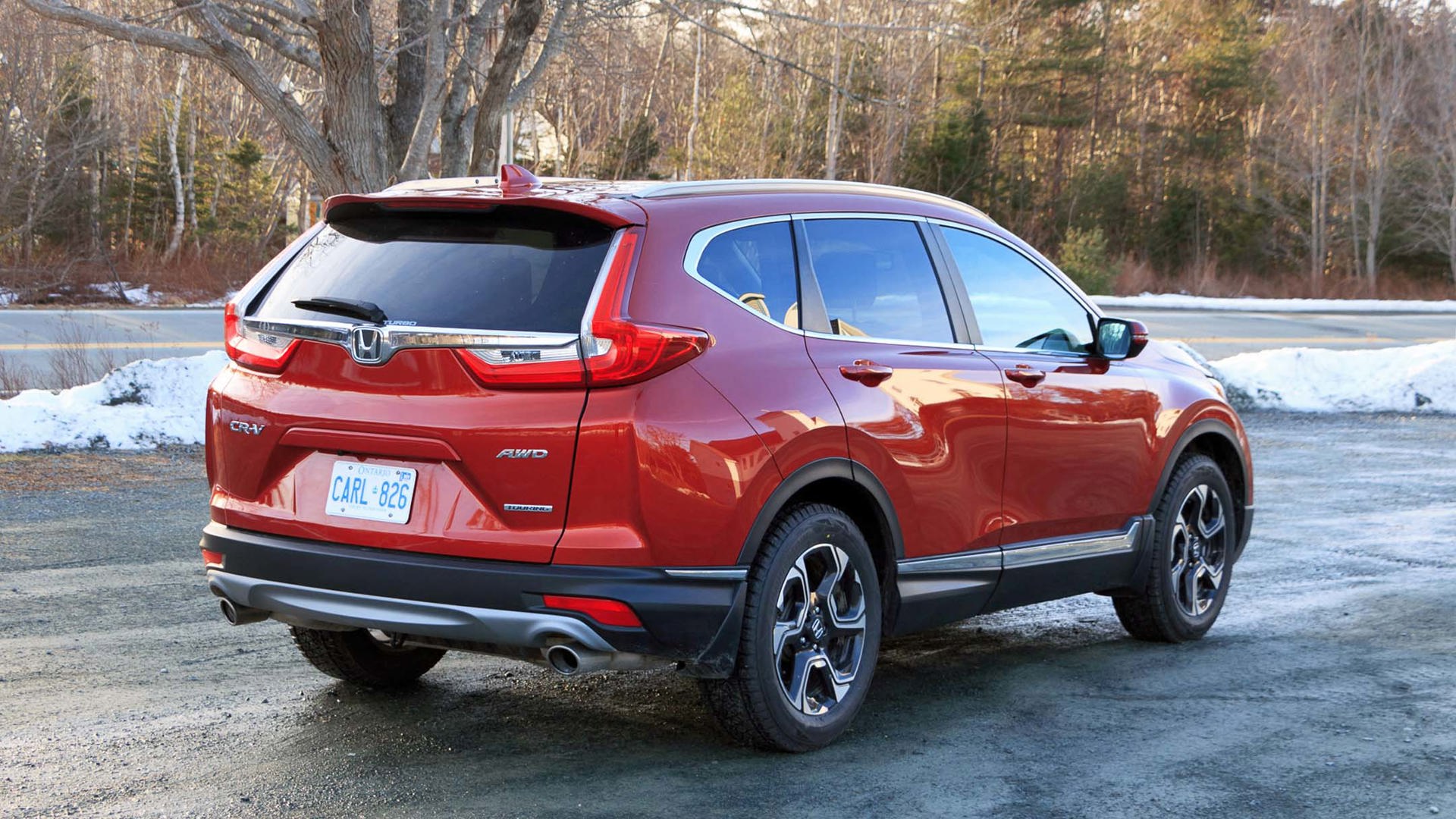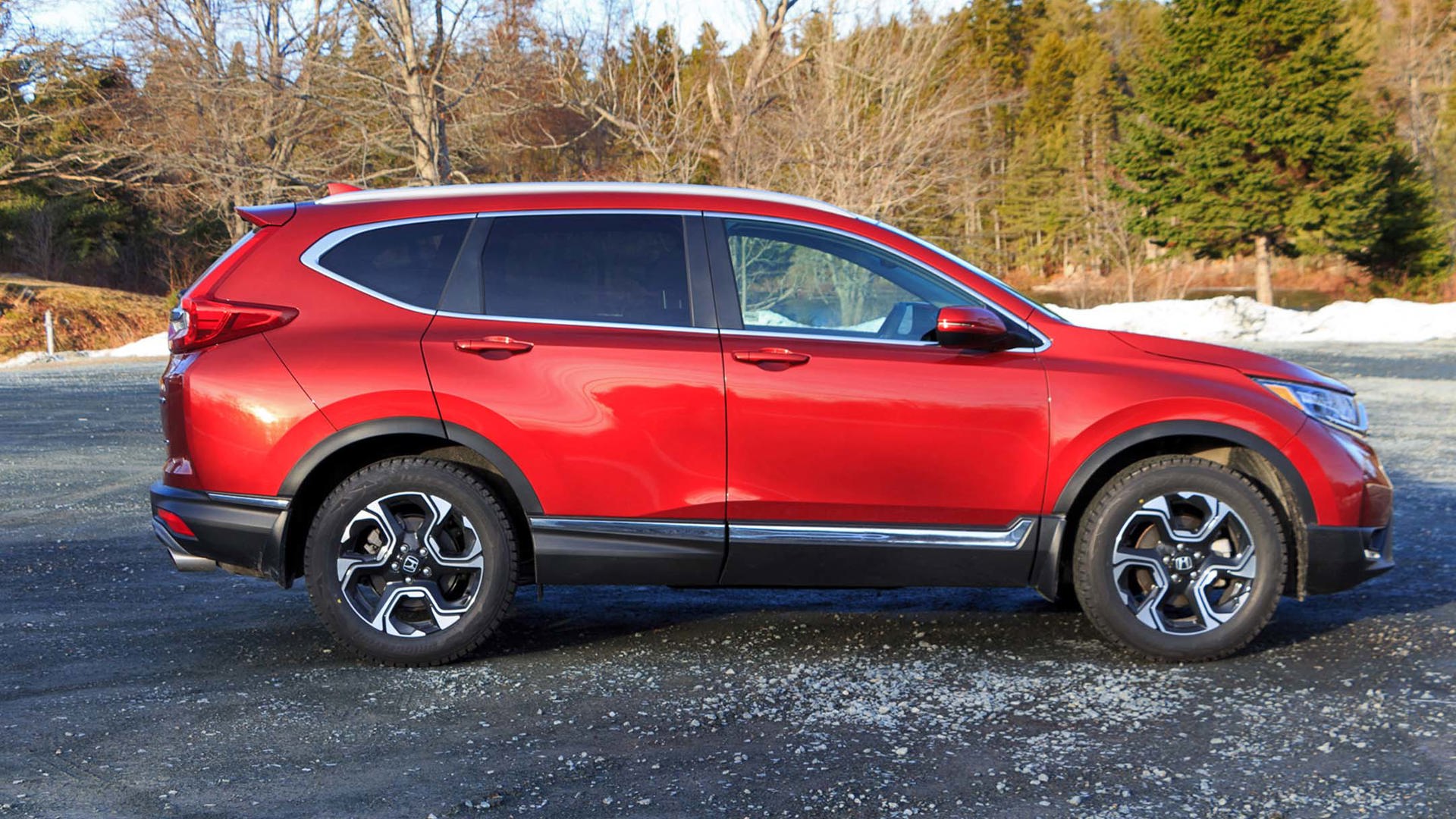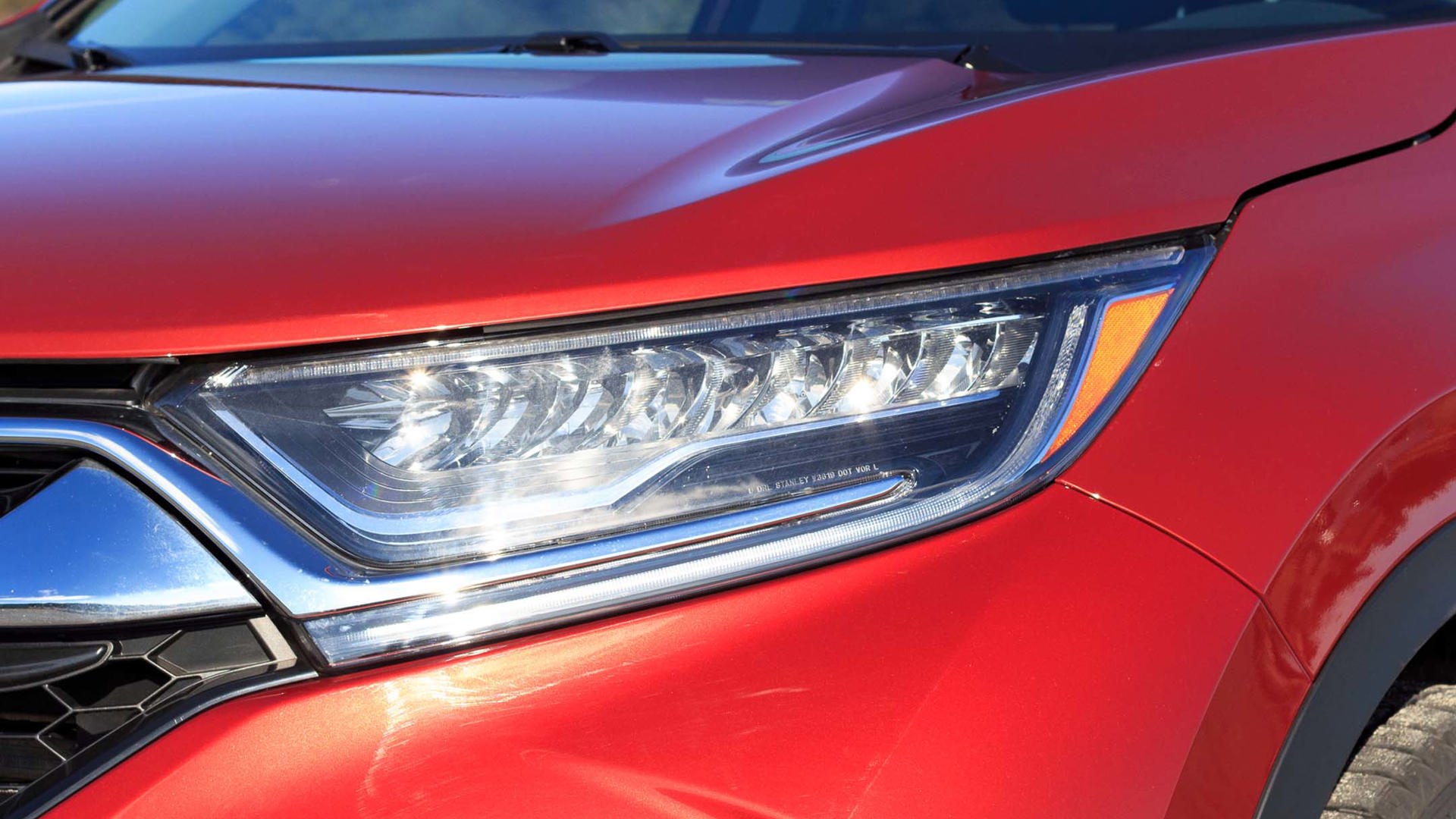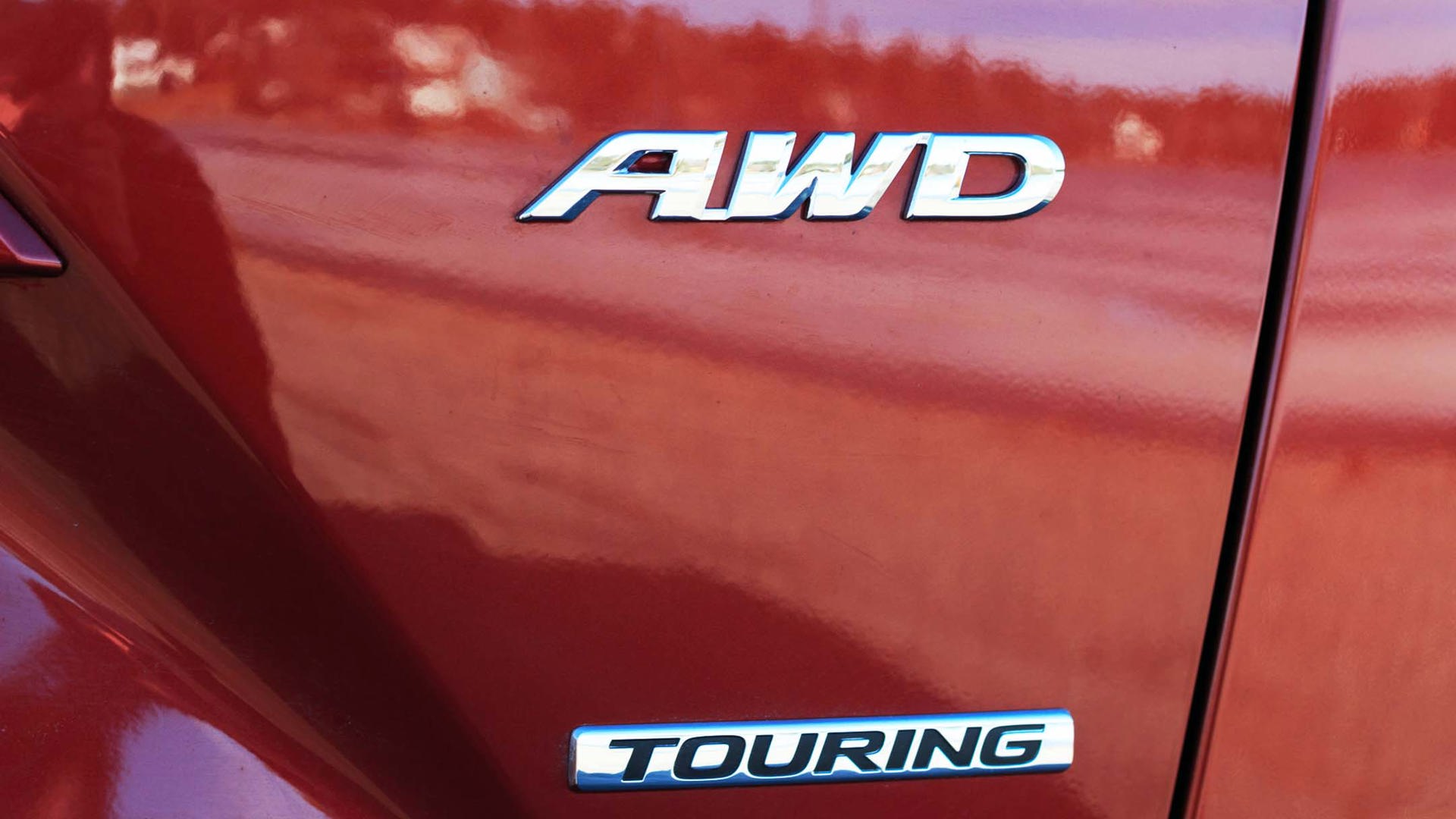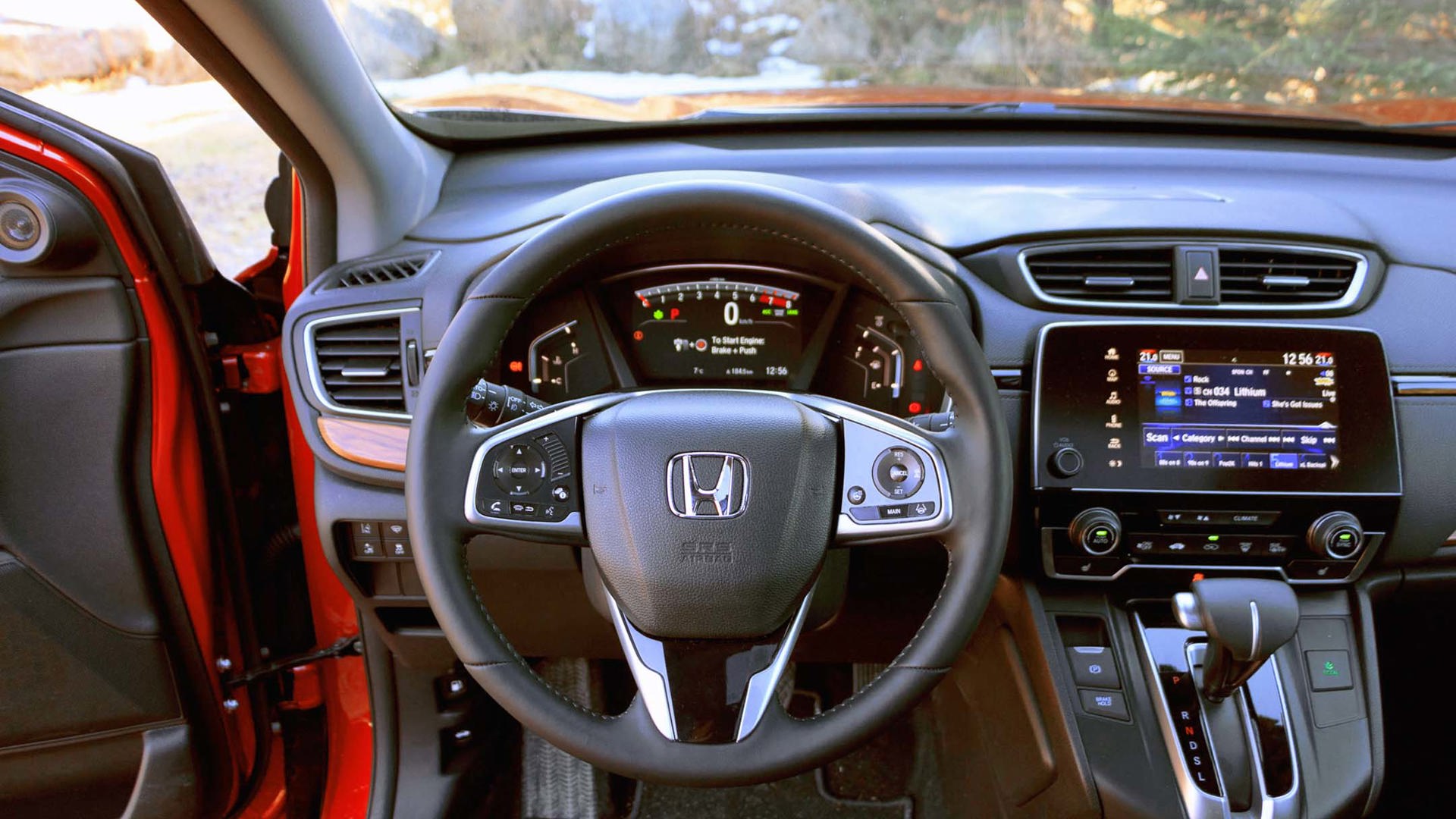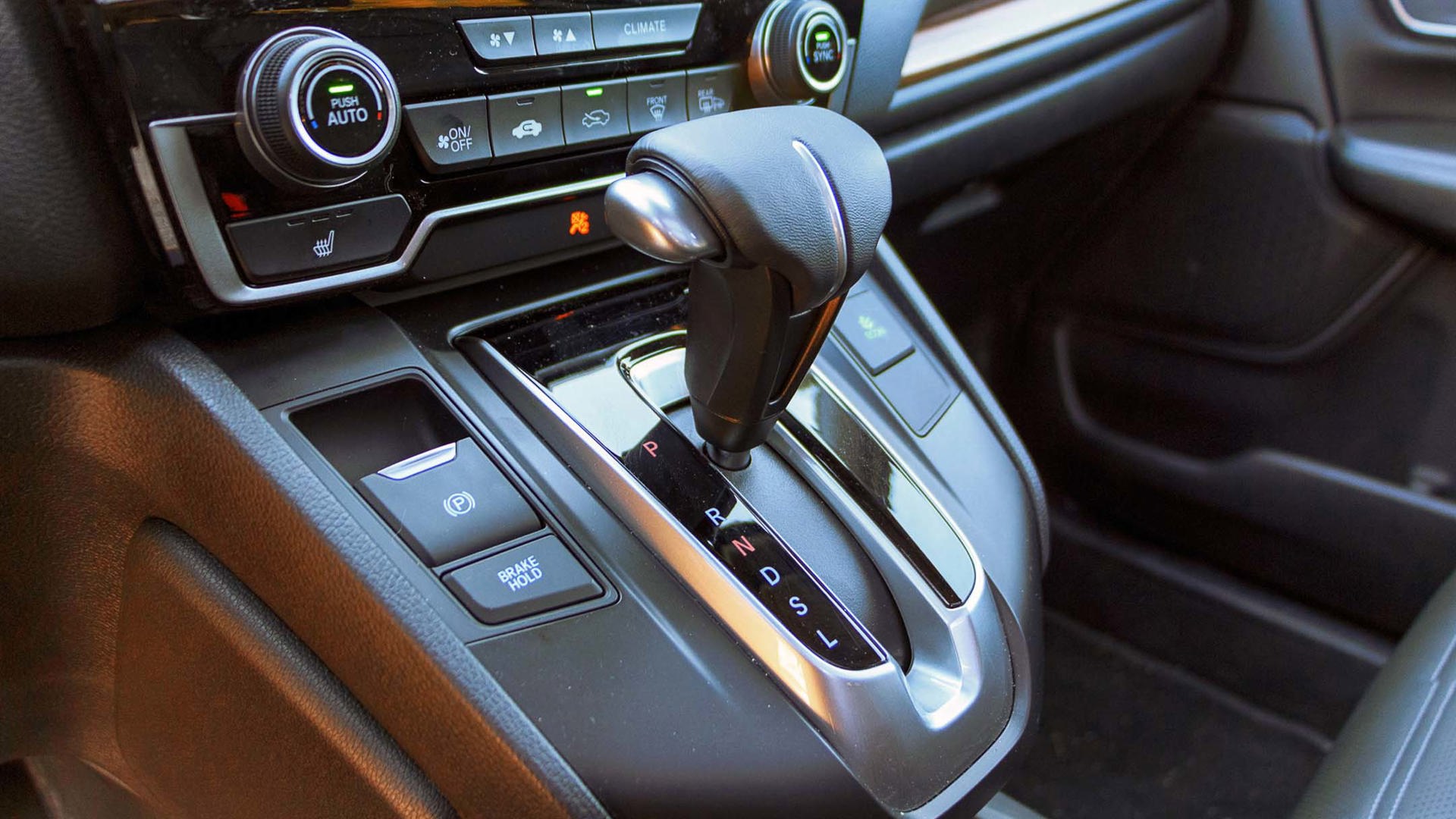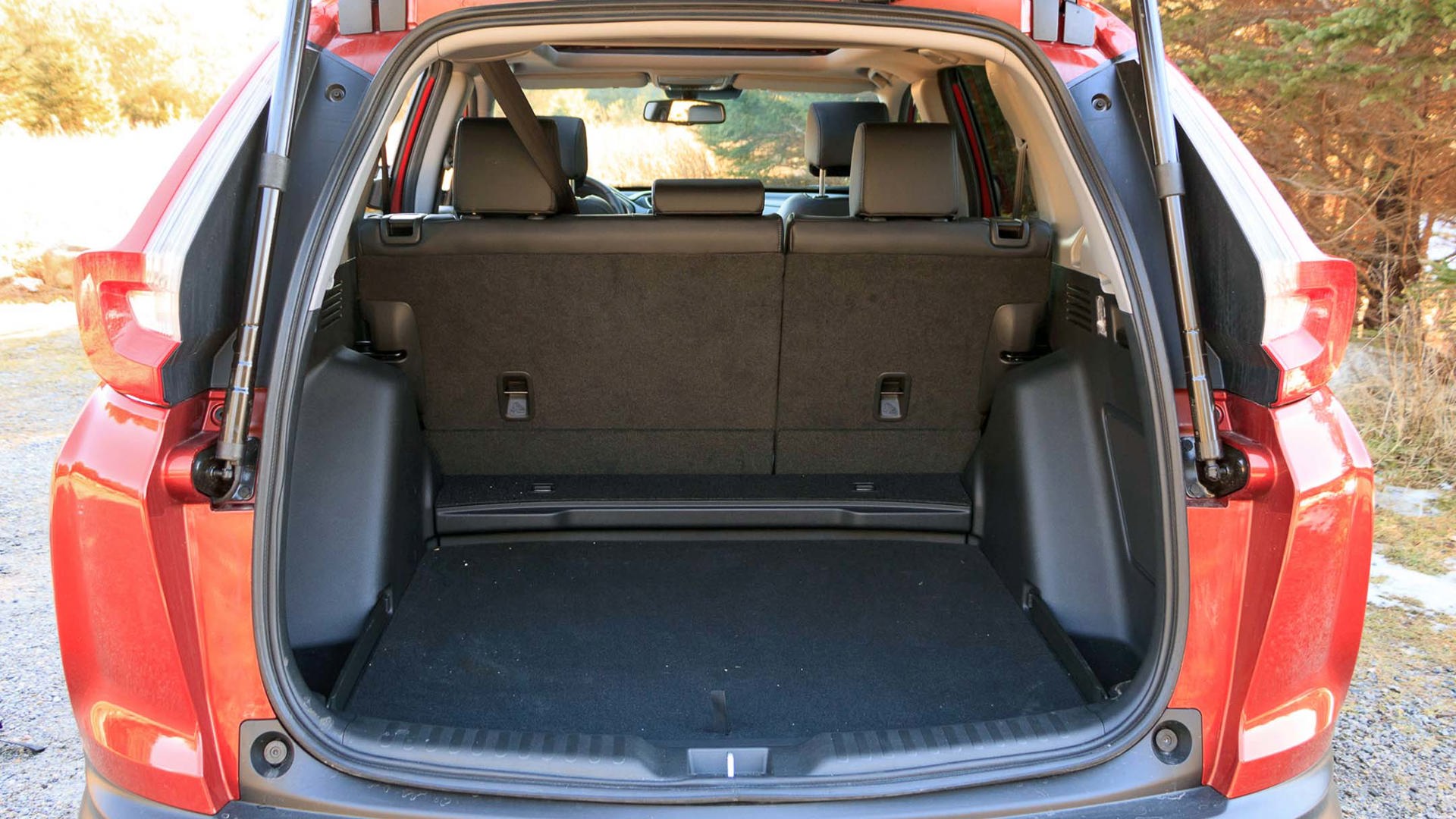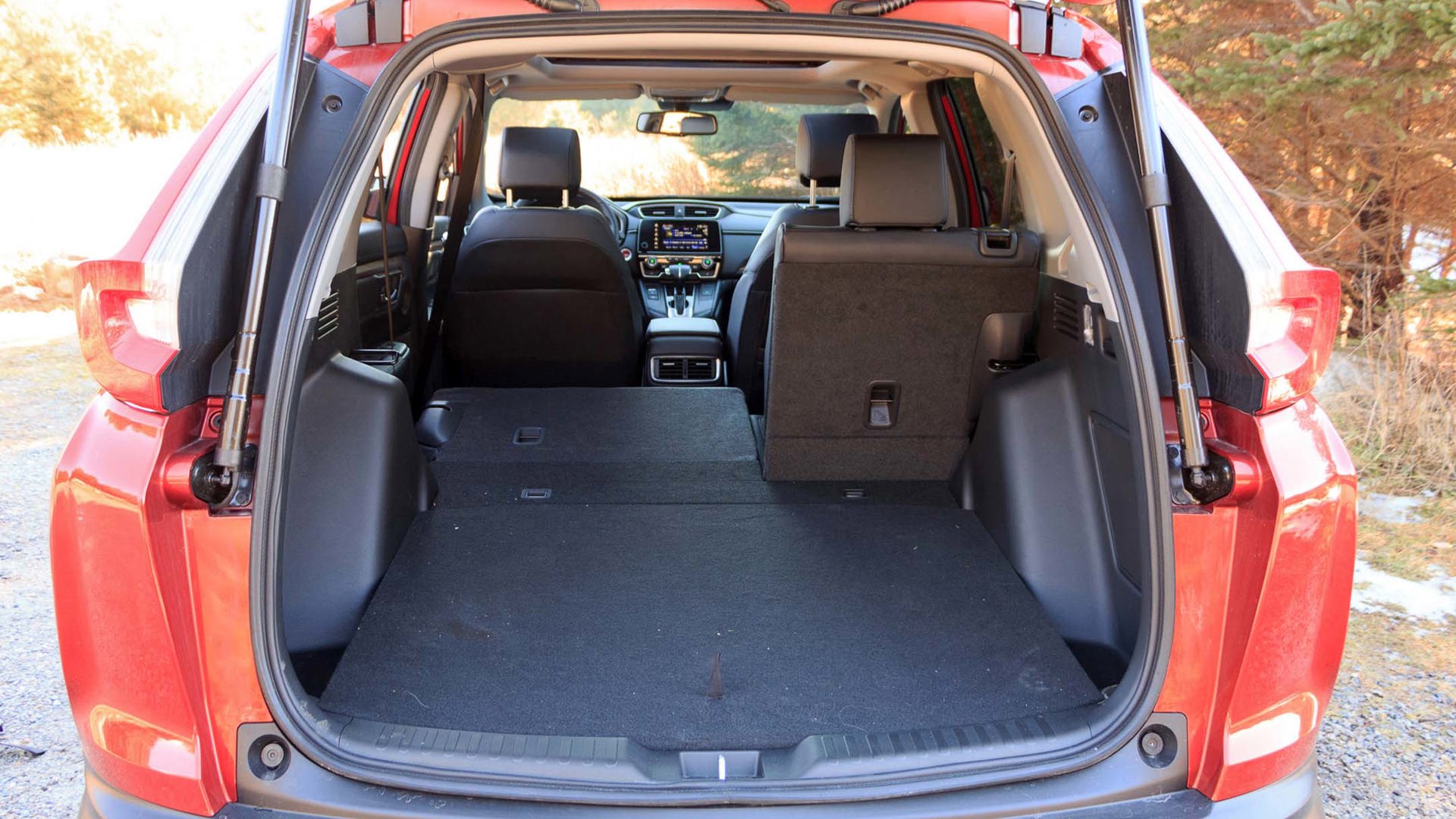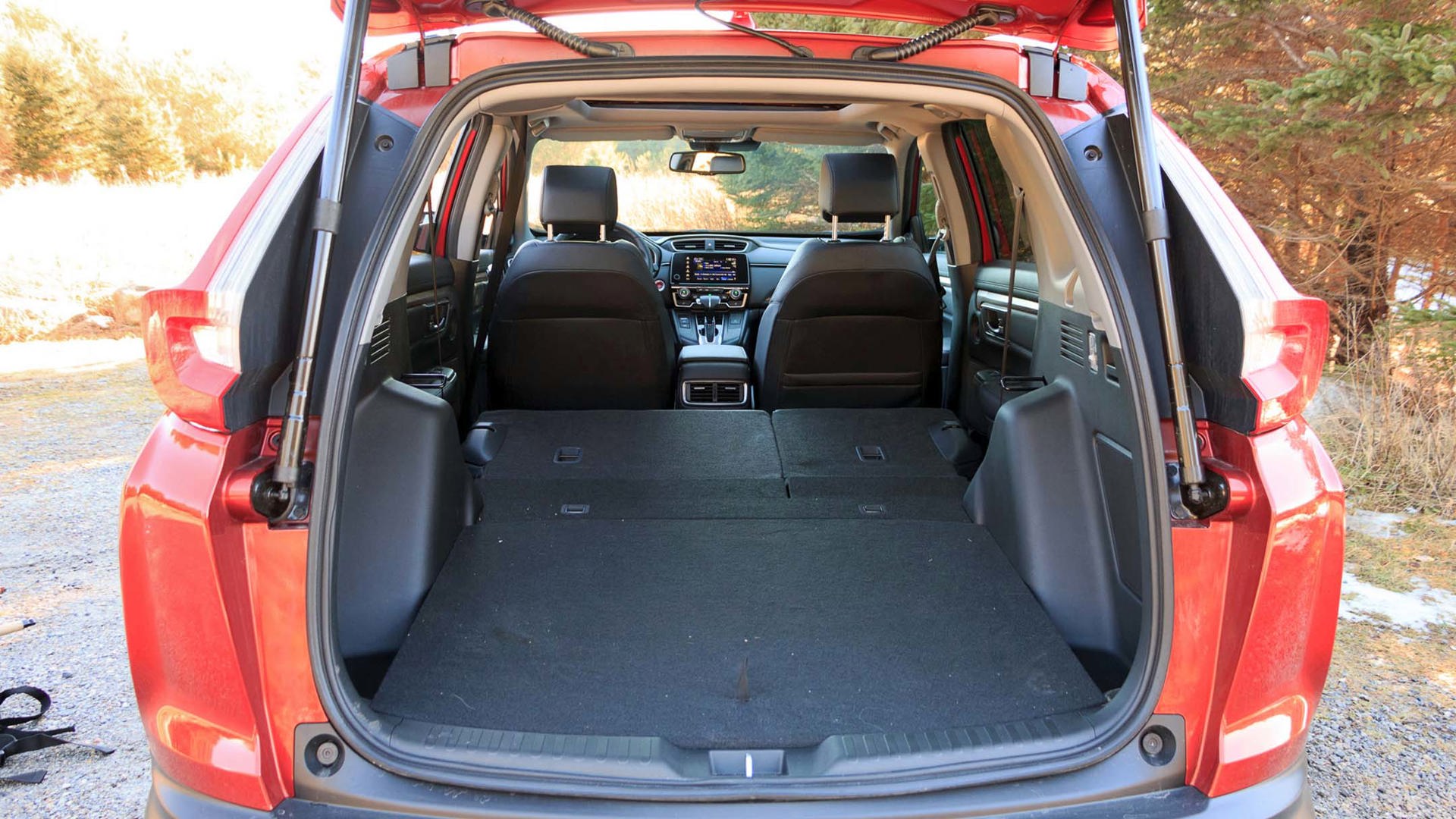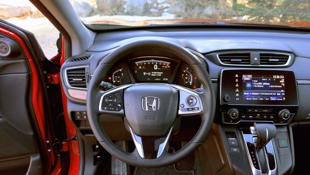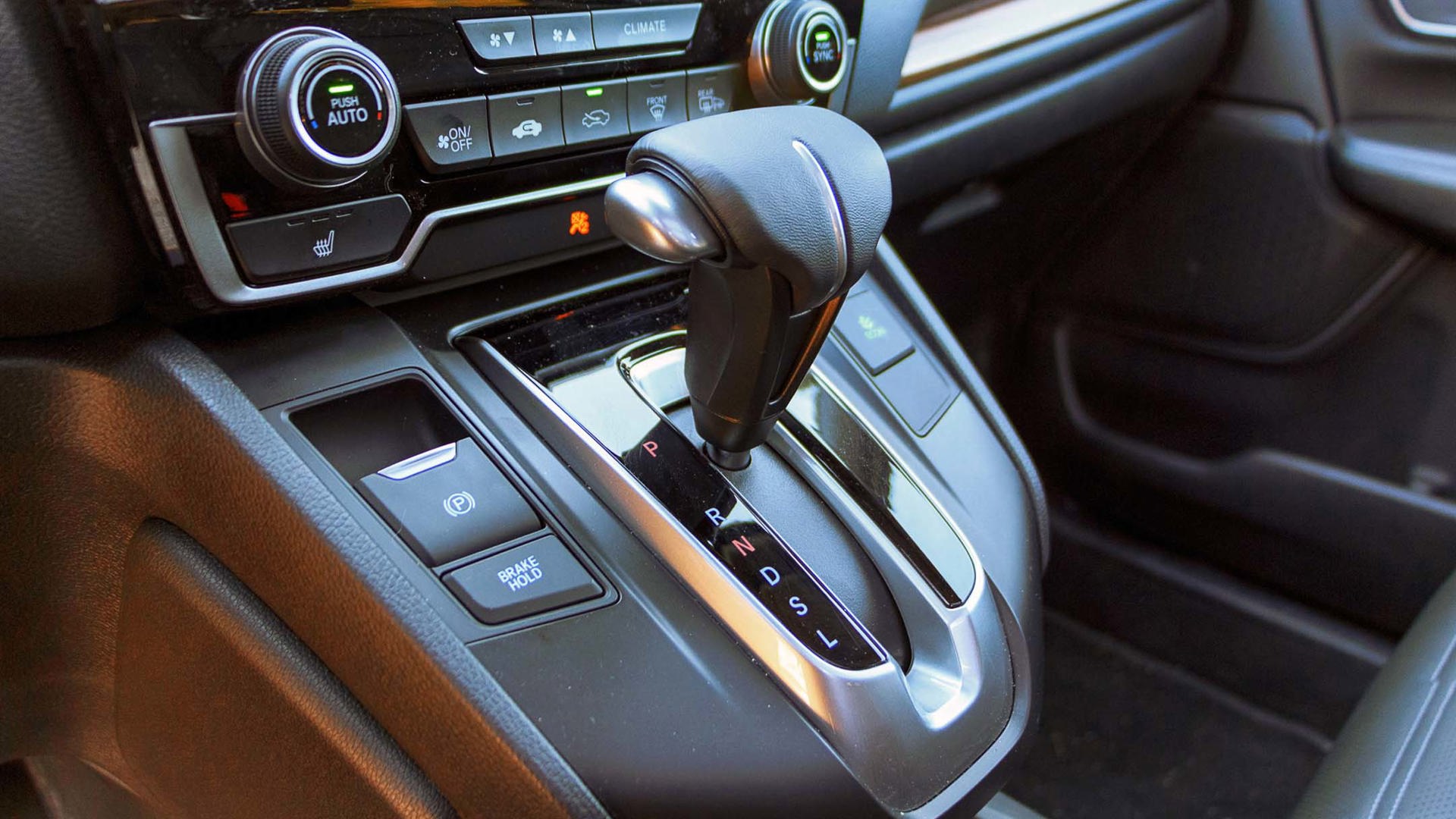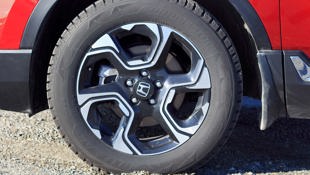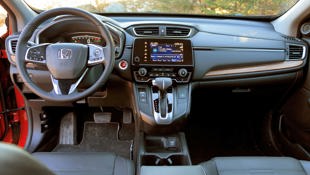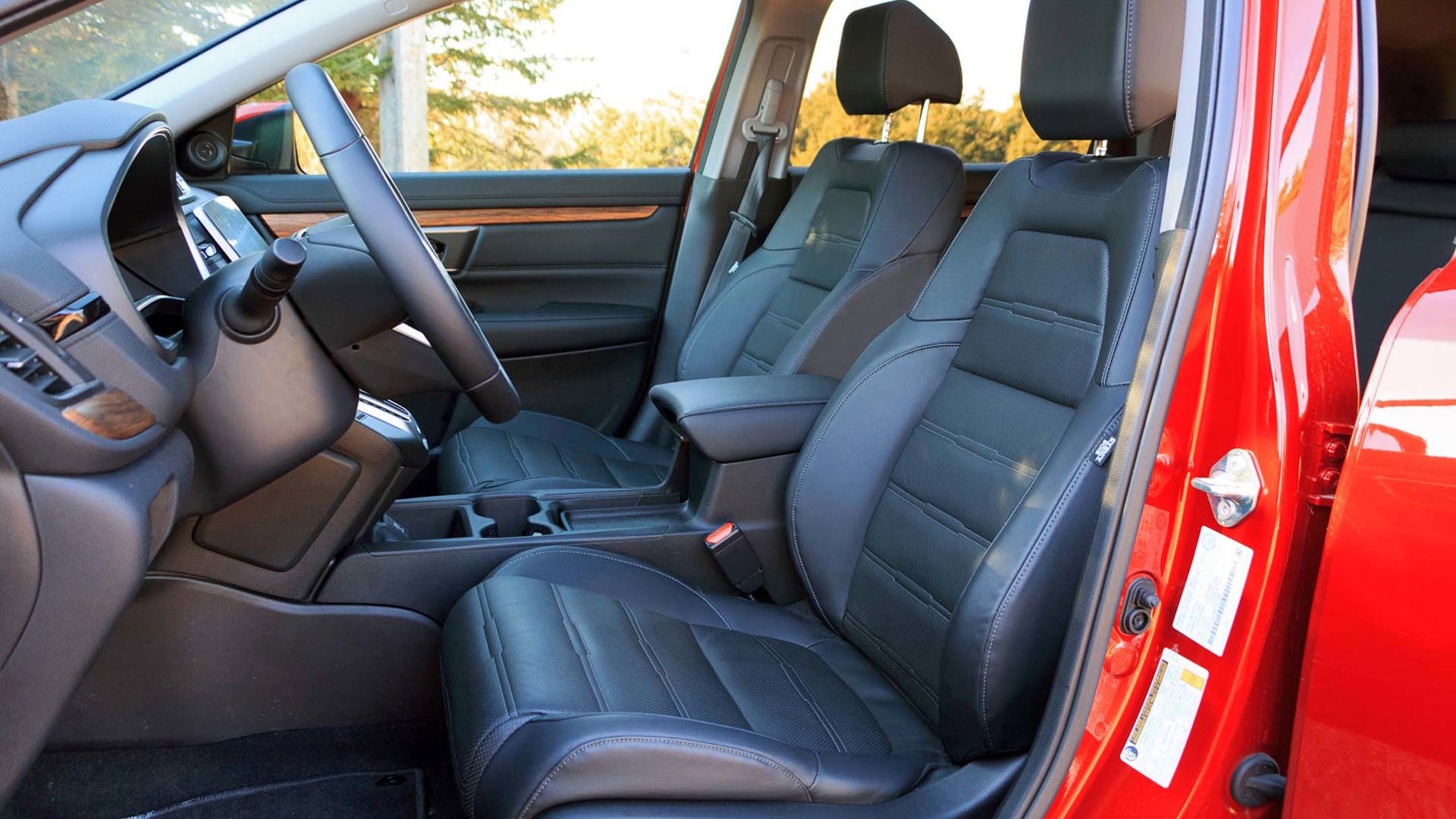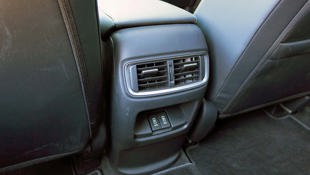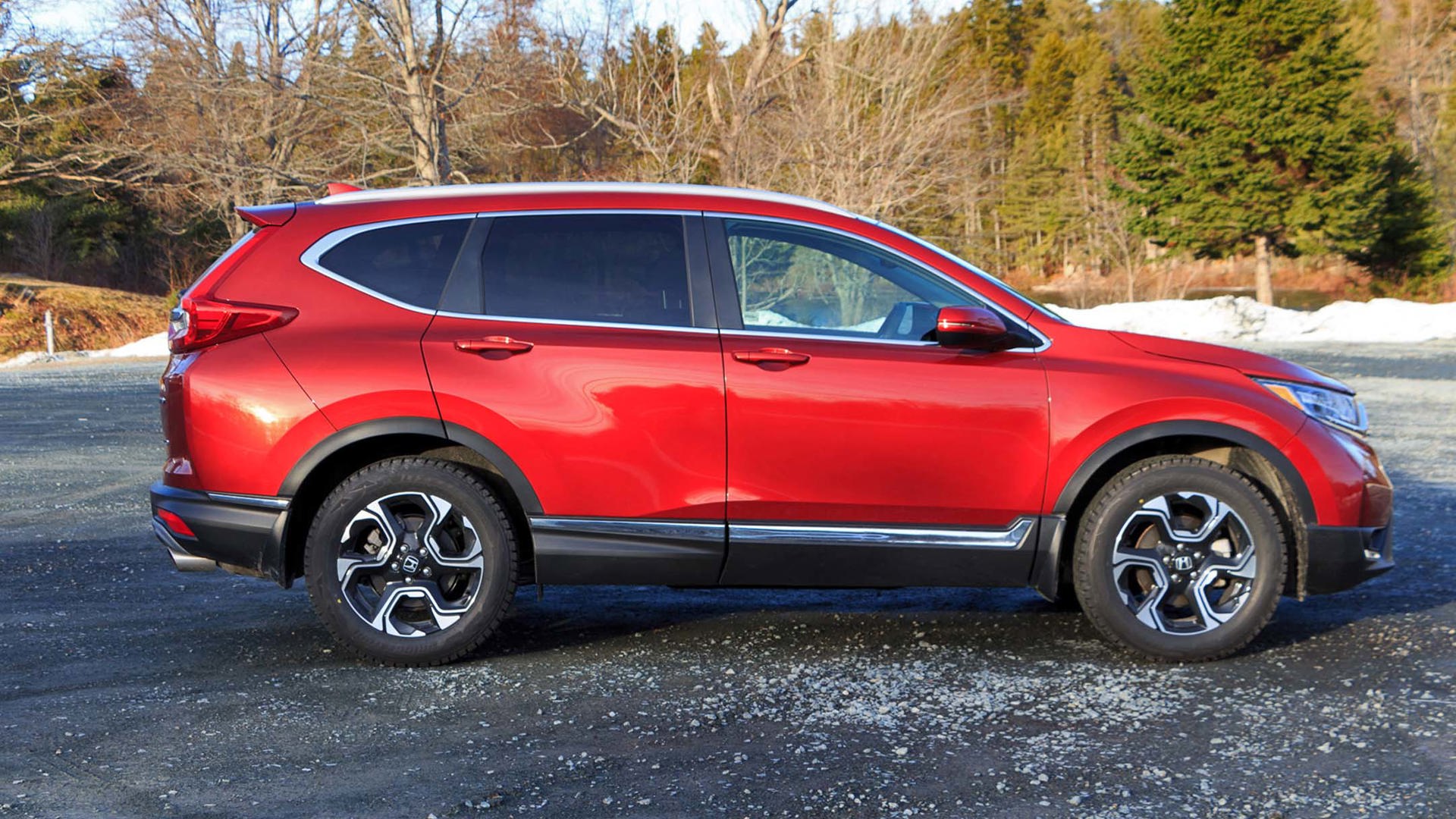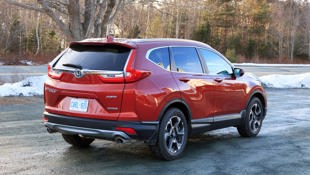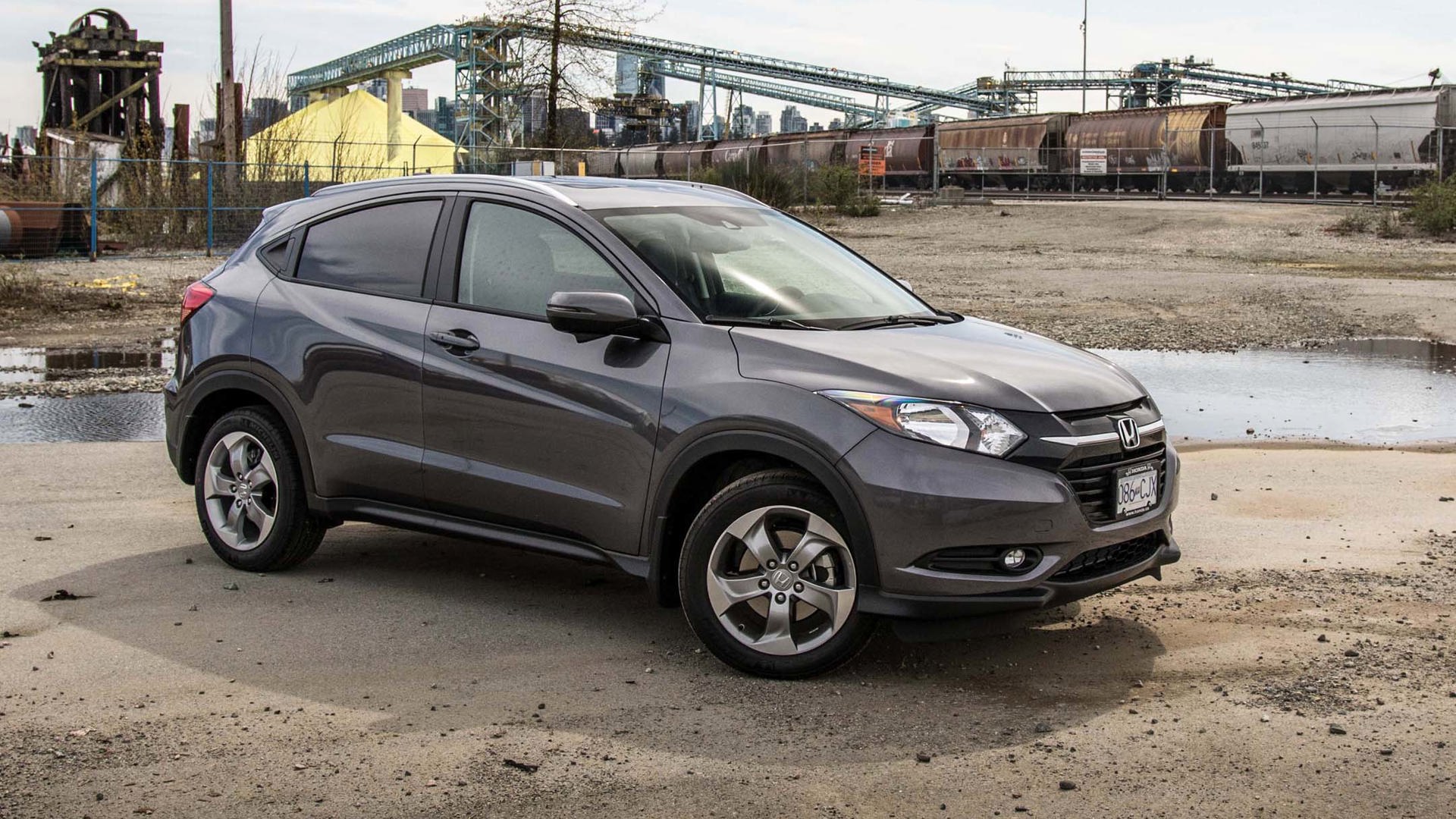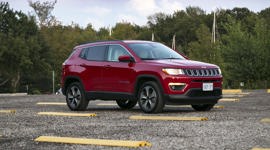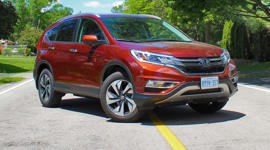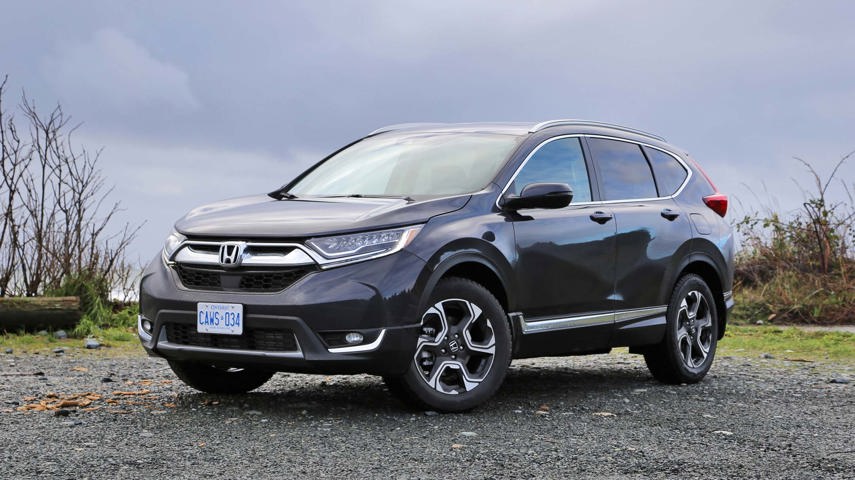 AutoTrader SCORE
AutoTrader SCORE
-
STYLING8/10
-
Safety7/10
-
PRACTICALITY9/10
-
USER-FRIENDLINESS9/10
-
FEATURES9/10
-
POWER9/10
-
COMFORT9/10
-
DRIVING FEEL9/10
-
FUEL ECONOMY9/10
-
VALUE8/10
A few years ago Honda started dropping volume knobs from their high-end stereos in favour of touchbars and sliders. The clean look that it gave those flat-faced radios was certainly an improvement, but as far as functionality was concerned it was a big step backwards. Journalists and customers complained, so when Honda redesigned the CR-V for 2017 they listened. The volume knob is back on all 2017 Honda CR-V audio systems.
That’s how you keep your position as one of the bestselling small SUVs in Canada for 20 years.
That’s how you keep your position as one of the bestselling small SUVs in Canada for 20 years. You listen to customers and you design things well. Not just the vocal complaints like the radio knob, but the important items. The shift knob, the seat height, the door openings, the load floor, outward visibility. You pay attention and design those things well and you end up with a really good car. And that’s what Honda has done with the CR-V for 2017.
This is the fifth generation of Honda’s Comfortable Runabout Vehicle (isn’t CR-V a better name?). In that time, just about everything about the little SUV has grown. Compared with last year it’s gained about 35 mm in every direction. Taller, wider and longer. Despite that size, which pays dividends for passenger and cargo space, the CR-V has gotten lighter than the outgoing model to the benefit of acceleration, handling, ride, and fuel economy.
To further help that fuel economy, the new CR-V gets only one engine and transmission combination in Canada and it’s a 1.5L turbocharged Earth Dreams four-cylinder combined with a continuously variable transmission. The engine is similar to the one in the Civic but has a little more boost for a bit more power. Here the engine makes 190 hp and 179 lb-ft of torque. LX models can be had with front-wheel drive, but the rest get Honda’s Real Time All-Wheel Drive.
The 1.5L engine delivers all of its torque from 2,000 to 5,000 rpm so it feels strong and moves along briskly at low revs and at low throttle openings. Moving the CR-V around that way it’s quiet, efficient, and barely noticeable. Exactly how the engine in a small SUV should be. If I kept the CR-V under about 3,000 rpm I barely noticed it was a CVT. Prod the gas pedal with more authority, though, and the engine leaps toward the redline. It doesn’t pull to a lofty redline like Honda engines used to, it just jumps to 6,000 rpm. At those high engine speeds, the engine gets loud and harsh. It doesn’t drone, it shouts. The CVT does use simulated “gears” to drop the engine speed slightly and make pretend shifts when accelerating hard which helps the noise issue slightly. That said, since most driving is at lower rpm, where the engine is near silent, it makes for a well-matched pair most of the time. If you’re driving normally, and not racing away from stop lights, the CVT is one of the best around. The combination is rated at 8.7 L/100 km city and 7.2 highway, and despite my driving being in the windiest and coldest days we’ve had all winter, I averaged 8.3 L/100 km.
Open the door of the CR-V and you’ll be surprised by what has to be one of the easiest vehicles to get in and out of on the market. I know that that’s the kind of thing that can be very subjective, so I had some friends of various heights and sizes try the door. They were all in agreement. The combination of the seat height, wide door opening, narrow sill, and the lack of drop from the sill to the floor all contribute to how comfortable it is to get in and out of both rows of seats. That’s designing things well. Once you’re in that driver’s seat, there is excellent visibility all around. The A-pillars are thinner than before, and there are no gun slit windshields or doors that come up to your shoulder here. Even the high mounted taillights help you to be aware of the car around you as they protrude just enough from the rear that you can see them in the mirrors, letting you know exactly where the bumper is.
The interior has made some real leaps ahead of the last-generation CR-V. For a start, it’s noticeably quieter inside. It’s still not the quietest in the class, but it’s certainly an improvement, with wind and road noise both greatly reduced. The wind noise is still there, but there’s much less of it. The quality of the materials has really jumped as well. Soft and inviting, it now looks downright premium for the class, feeling up to par with the Acura MDX I drove last month. The steering wheel has also been reshaped and your hands will appreciate the new curves, plus it’s heated on EX-L and Touring. My Touring trim test car gets some reasonably convincing and warm-looking wood trim to further enhance the cabin. Heated front seats are standard on every trim, with the rear seats heated on EX-L and Touring. These seat heaters, and especially the heated wheel, are among the quickest to warm and hottest I’ve ever used, something Honda has been doing very well recently.
The new volume knob isn’t the only place where the interior gains a more tactile feel. In a world that is increasingly moving to overly complicated shift buttons, knobs, dials, and levers, the CR-V keeps a massive T-handle shifter, complete with a beefy lockout release button. It’s straightforward, uncomplicated, and reassuring. More than once I caught myself shifting repeatedly from park to drive before getting out just to enjoy the feel. [You’re an odd duck, Evan. – Ed.]
All trims get Honda’s Display Audio system with a 7.0-inch touchscreen. The system comes with Apple CarPlay and Android Auto, and Touring models have a navigation system designed by Garmin. The system works quickly and responsively and is easy to use. The only physical control for the system is the volume knob, so the first time you set your satellite or regular radio stations can be somewhat of a chore. There is no way to scroll quickly, so you need to tap the channel up or down on-screen buttons a lot of times. More than 100, depending on which station you’re looking for. For most people, that’s a one-time task when you set up your presets, but if you’re a constant channel hopper it’s something to keep in mind. LX models have two USB ports in the center console, and higher trims add two more 2.5 amp charge ports in the back seat.
The digital gauge panel is clear, simple, and easy to read. The trip computer is built-in to the display and can show not just economy and mileage, but also display the radio settings, navigation directions, and even gives you a little display to show how power is being routed to each wheel via the all-wheel drive system. The power distribution display can be fun to watch, especially in the snow. The digital temperature and fuel gauge sliders are very ’80s, but the look works with the rest of the dash.
All around the interior, the CR-V is filled with well-designed cubbies and places to hold items large and small. The center console is adjustable and cavernous; the pockets in the front and rear doors will hold a litre bottle upright. Headroom in both rows is excellent, even with the panoramic sunroof (a Canada-only feature), and the extra size of the new model gives about 50 mm of extra knee room for rear seat passengers. That extra room means that three adults can sit comfortably back there.
The cargo area is now larger, offering 57L more room with the seats up. There are pockets on each side behind the wheel wells to help stop objects from moving around, and a rather cleverly designed floor setup. The spare tire cover, which makes up nearly the entire load floor, sits about 5 cm below the level of the rear seats and tailgate opening. That gives a surround that helps trap items on the floor from rolling around and gives extra cargo height. Lift up that cover and there are slots in the tailgate surround and behind the rear seats that will hold the cover in place. With the cover in that position and the rear seats folded, the load floor is completely flat from the edge of the tailgate to the headrest of the folded seats. With those seats folded, the cargo space is 142 L larger (for a total of 2,146 L) than what was an already large space in the last-gen model. Combine that with the easy reach-in and the low height of the load floor and it is as usable as it is cavernous.
On the road, the CR-V drives predictably. The suspension rides smoothly without crashing over bumps, but it doesn’t ever feel floaty either. Honda has added a stiffer steering column and revised fluid-filled bushings for 2017, and it makes for steering that feels very predictable and stable handling. It’s not a vehicle that asks you to hustle it along, but it never backs down either. Even in hard cornering, the CR-V feels planted, composed, and confident. The 18-inch wheels on my test car wore tall 235/60 series tires, and the big sidewall helps with compliance over sharp impacts like potholes without being so tall as to get squirmy on the highway. Even with side winds gusting over 70 km/h, the CR-V tracked well and seemed mostly unaffected by the winds.
Honda has added quite a few new tech and convenience features to the new model with all trims getting remote start standard, along with automatic proximity locking. EX-L and above get a power tailgate, with hands-free on Touring. All models with all-wheel drive get emergency braking and collision warning as well as lane-departure warnings, lane-keeping assist, and road-departure mitigation which will brake and steer if it feels you are leaving the roadway. Honda’s emergency braking warnings are a touch sensitive, and I got a number of alerts at odd times, but at no point did it brake when it shouldn’t have. They also get radar cruise control that is capable of low-speed following. EX and EX-L models come with Honda’s passenger side camera that will display your blind spot when you signal a right turn, and Touring trims get a full blind-spot alert system as well as rear cross-traffic alerts. All trims also get a back-up camera as standard, with predictive guide-lines.
So inside the box is great, but when it comes to cars, the box matters too, so in what could be a first for the CR-V, it’s good looking as well. I’ve seen a lot of photos that give the new nose a bit of a bulldog’s underbite, but it doesn’t look that way in person. The new body clearly has a family resemblance to the last two models, but this time there’s definitely style instead of bland. The rear is more square, there’s some extra brightwork on the bottom of the doors, but most prominent are the bulging wheel arches front and rear along with the shoulder line which is bisected by the door handles. That extra chrome in the grille hides active grille shutters to improve aerodynamics and nicely frames the available LED headlights. The 18-inch polished and black painted alloys on EX and higher trims are quirky and have a three-spoke early-’90s look. Honda has been making the wheels on most of their models a little more unique in the last couple of years, and I, for one, like it.
The all-new CR-V is bigger, quieter, less thirsty, and better looking, plus the interior is greatly improved over last year’s model. The CR-V has long been Honda’s number-two bestseller and they’ve done exactly what they need to keep it there, and even take a run at the Ford Escape and Toyota RAV4 for top-selling small SUV.
| Engine Displacement | 1.5L |
|---|---|
| Engine Cylinders | 4 |
| Peak Horsepower | 190 hp |
| Peak Torque | 179 lb-ft |
| Fuel Economy | 8.7/7.2/8.0 L/100 km cty/hwy/cmb |
| Cargo Space | 2,146 L |
| Model Tested | 2017 Honda CR-V Touring |
| Base Price | $38,090 |
| A/C Tax | $100 |
| Destination Fee | $1,725 |
| Price as Tested | $39,915 |
|
Optional Equipment
None
|
|
